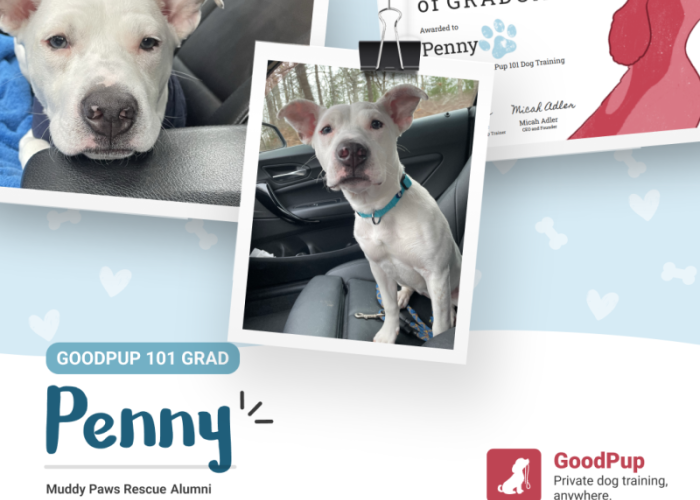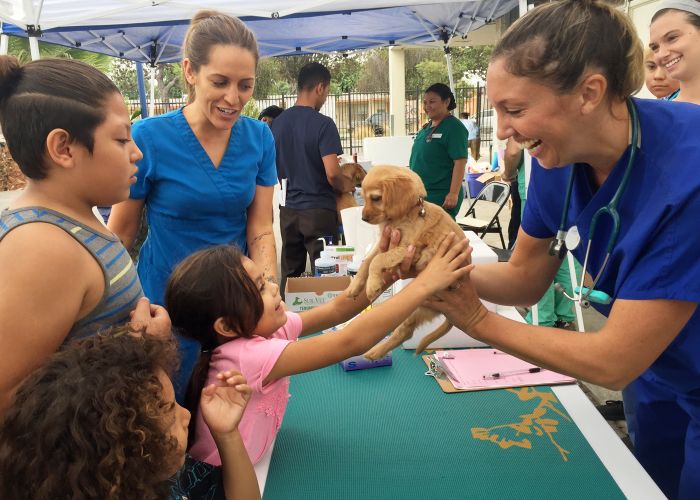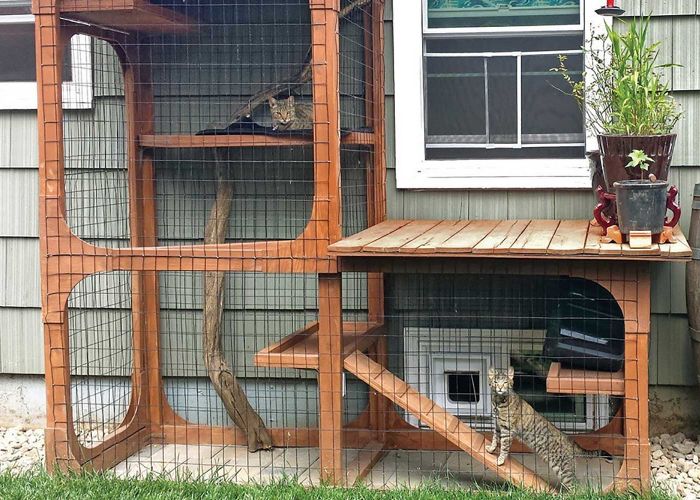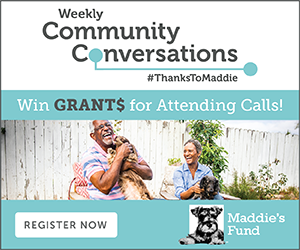Keeping it civil in animal welfare
Experts share ways to foster respect, compassion and humane discourse
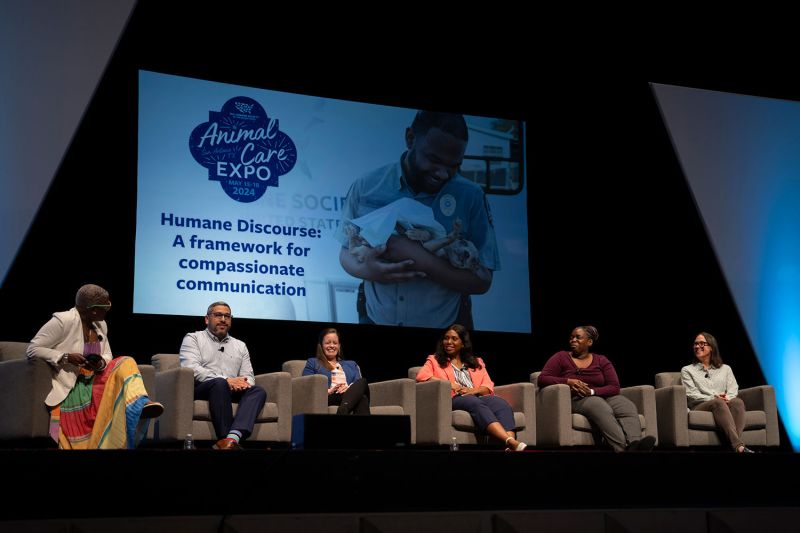
José Joel Delgado-Rivera was in Washington, D.C., celebrating his wedding anniversary, when he got a message on his direct work extension at the Animal Rescue League of Berks County, Pennsylvania. As he and his husband strolled in front of the White House, he listened to the voicemail: “I hope you and your family die in the most cruel way possible,” said a woman’s voice.
It was his first such threat as the shelter’s chief communications officer.
The incident that led to the voicemail involved a dog who had been running loose. The person who found the dog reported that the animal was friendly, but when animal control officers arrived, the dog was reacting aggressively and out of control. Unfortunately, during the intake, the dog bit team members twice. Under the municipal dangerous dog rules, that meant the dog had to be euthanized. The finder found out and posted on social media.
“If I didn’t have to work with social media, I would delete all my accounts; it’s a very toxic environment,” says Delgado-Rivera, who now works at Spotlight PA. But during his four years at the Berks County shelter, he kept the channels between the shelter and the community open, even when it hurt, and tried to serve as a firewall between the public and shelter staff.
“We try to understand where the person is coming from; we let them cool themselves,” he says. “Most of the time, they move to being neutral and eventually working with us. They calm down.”
A pledge for kinder conduct
In 2011, when it was common for animal welfare organizations to attack each other over euthanasia policies, Humane World for Animals established an online pledge to promote respectful communications and collaboration in the field. Several organizations enthusiastically signed on, and over time, as shelter euthanasia numbers dropped, tensions fell, says Betsy McFarland, a former Humane World staff member who oversaw the pledge’s creation.
Now, in the aftermath of the COVID-19 pandemic, as some shelters struggle with falling adoption rates, tensions are rising again, says McFarland, principal at the Adisa consulting firm, which advises nonprofits on strategy and leadership.
Humane World recently revived the call for humane discourse and expanded the message to include the general public. The new pledge encourages shelters and rescues to engage humanely with their communities (and each other), and it asks the public to treat shelter and rescue staff with respect. At Animal Care Expo and other conferences, Delgado-Rivera and fellow animal welfare professionals have shared how shelters can foster a culture of civility and respect and create a compassionate framework for disagreement.
Humane discourse involves shelters and rescues being clear with their communities about their policies—what they can and can’t do, says Lindsay Hamrick, Humane World director of shelter outreach and engagement. And Delgado-Rivera and others say it also requires a deliberate approach: being transparent and getting the shelter’s story heard, keeping calm and de-escalating conflict, creating a healthy culture among shelter staff and preventing burnout.
“People don’t like silence, so something will fill it—it has to be your side of the story. Every time there’s a difficult situation, it’s an opportunity to clarify.”
—José Joel Delgado-Rivera, formerly with Animal Rescue League of Berks County
Caring for animals in an uncivil world
Long before social media and political polarization contributed to a decline in civility across society, shelter workers faced raw and often ugly emotions from people within and outside the animal welfare field.
Inga Fricke, executive director of the McKamey Animal Center in Chattanooga, Tennessee, remembers the threats she and other staff at a Virginia shelter received in response to news articles about dogs who had killed a member of a family. People said if shelter staff killed those dogs, they would do the same to them. The family eventually chose to euthanize the dogs.
Fricke says a lack of civility and respect aren’t just unfortunate features of the animal welfare field; for some people, they’re almost a point of pride.
“The lack of compassion for humans has been held up as a badge of honor,” she says. “People who have endless compassion for animals but no compassion for humans see themselves as heroes.”
McFarland has seen nothing else like it in her years consulting for other social justice nonprofits. “Animal welfare is different,” she says. “People are making decisions about life and death.”
The emotions and criticisms that can be triggered by such decisions take a toll on shelter staff, including veterinarians. Shelter veterinarians are most resilient when they feel trusted and supported in their professional expertise, says Dr. Jennifer C. Bennett, director of Shelter Medicine Access to Care at the UC Davis Koret Shelter Medicine Program. It’s not the long hours or the difficult medical cases that lead to burnout, she notes, but the absence of clear communication and mutual respect.
“The shelter is a peculiar environment where medicine happens on display, in a clinic that has been placed inside of another organization. ... It’s like being on exhibit, where [the public] are in the hospital watching patients being treated in the ICU [intensive care unit]; suddenly, there are people weighing in on your medical decisions who lack the legal and medical authority to do so,” Bennett says. "When shelter leadership and other stakeholders understand and uphold the veterinarian’s role as the medical authority, it creates an environment of shared confidence and collaboration. That trust allows medicine to happen smoothly—even in the most emotionally charged situations.”

Calming conflict
When Delgado-Rivera started working at the Berks County shelter in 2021, he began by repairing relations with the media. Before, the shelter would retreat behind a barrier whenever there was a problem, providing only a written statement and refusing to grant interviews. All that did was generate negative coverage.
At Berks, Delgado-Rivera, who has a bachelor’s in journalism and a master’s in public relations, made himself available to answer questions or refute accusations.
“People don’t like silence, so something will fill it—it has to be your side of the story,” he says. “Every time there’s a difficult situation, it’s an opportunity to clarify.”
Rande Levine, founder of a companion animal alliance in Iowa, Nebraska and South Dakota called the Tri-State Cooperative Coalition, says putting processes and procedures in place to prevent mistakes and manage public expectations is essential. Retaining your composure is also crucial.
“When people are stressed, that’s when conversations can go off the rail,” she says. “If you’re calm and collected, people have no choice but to be calm and collected. I never want to say, ‘I can’t talk to you.’ I just offer another time to connect. And actually schedule a time. To say their voice matters.”
If you’ve made a mistake, admit it. Levine wishes she’d been more apologetic when she adopted out a dog who had sat in the shelter for two weeks and then the original owner showed up but the adopter wouldn’t return the dog. If people are angry, don’t become angry in return.
“I’ve had my share of people yelling in my face,” Levine says. “I’ve had people say some pretty awful things to me to my face that hurt, but those weren’t true. I don’t engage with them. They’ve already posted on social media, called all their friends, told the world, I can’t control that. Everything passes. … Give it two weeks.”
“How we treat people is just as important as how we treat animals.”
—Inga Fricke, McKamey Animal Center
Fostering a healthy culture
Sometimes, the most challenging relationships will be with others in the animal welfare field, says Jerry Dominicak, executive director of the Siouxland Humane Society, who for three decades has tried to build a local network of shelters and rescues in the Sioux City, Iowa, area. He’s learned that building relationships with smaller organizations takes time and isn’t always easy. He stays engaged anyway.
“We have just decided we’re going to help them with food, with supplies, take animals …” Dominicak says. “You just have to hope over time you win over some of these organizations.”
Civility, respect and compassion among shelter staff, between shelters and with the public start with healthy cultures within shelters, says Fricke.
In October 2020, when she became executive director at the McKamey Animal Center, she arrived to find a toxic culture among employees. Fricke says she changed it by asking those who weren’t able to treat others well to leave.
Now, the shelter has lower turnover; for several years, it’s been named a “Best Place to Volunteer” and “Best Nonprofit” finalist in the Chattanooga Times Free Press annual awards. Some of the people who fled the former environment have returned.
“How we treat people is just as important as how we treat animals,” Fricke says. So when people tell her that you can’t force people to be nice to one another, she responds: “You can.”

Practical empathy
Defusing tensions takes energy. It’s easy to burn out.
Jessica Dolce, an expert on compassion fatigue, says shelter staff can start fostering a civil and respectful relationship with the public by recognizing all that the people who come to them have been through.
For example, someone who is relinquishing a pet may be unable to find affordable housing or vet care. They may also be dealing with the myriad challenges of poverty or battling health issues, addiction or domestic violence.
“People are struggling right now,” says Dolce. “Many of us are carrying a cumulative load of chronic stress and trauma, which reduces our ability to tolerate stress.”
Shelter staff should practice trauma-informed customer service and de-escalation, she says. After the workday, they should give themselves time to recover.
Stop constantly checking workplace social media or replying to comments, Dolce says. Instead, watch a funny video, talk to a friend, exercise, draw or do a puzzle—anything to get yourself out of a reactive pattern of looking for and responding to criticism. Just a few minutes can give you perspective, allow you to think more clearly and, most important, rest.
For herself, Dolce has taken a longer break from social media—she’s not on it anymore. “I stopped because I didn’t enjoy it. I wanted to reclaim my focus and be more intentional about how I spent my time.”


